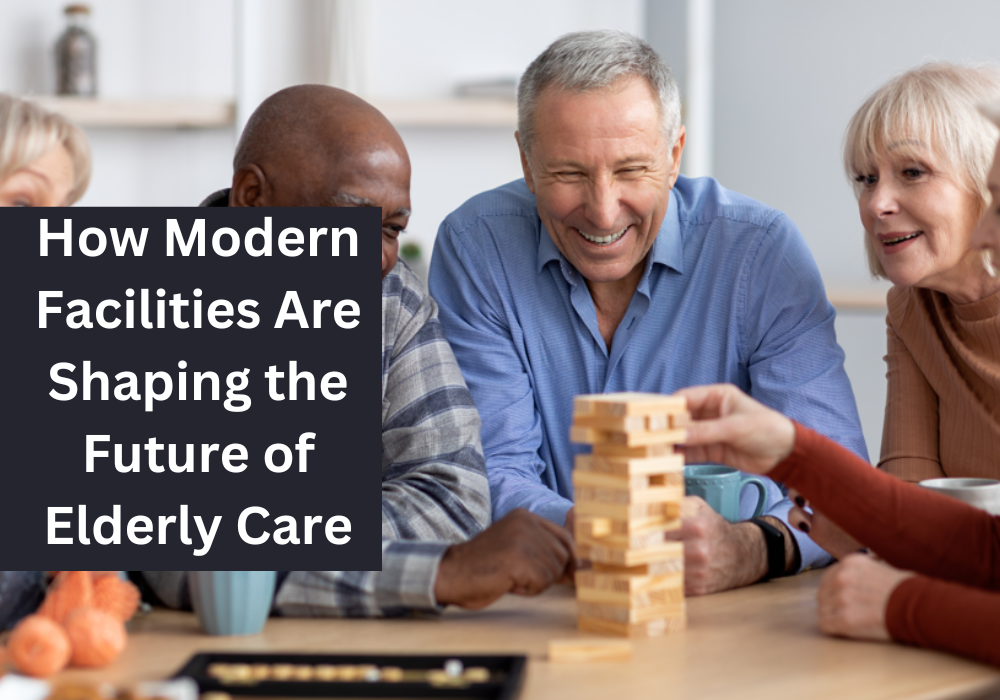Caring for an elderly loved one is a deeply personal and sometimes overwhelming journey. The decision to seek outside support, particularly in the form of assisted living, unveils a trove of complex emotions and practical considerations. This transition is a pivotal moment for the seniors in our lives and the family and friends who want nothing less than the best care for them.
In this discussion, we’re going to explore the surging evolution of elderly care, particularly within modern assisted living facilities, and how these developments are meeting our seniors’ needs and transforming the essence of what it means to age with dignity and grace.
Evolving from Essential Care to Innovative Solutions
The concept of assisted living arose as a response to the limitations and impersonality of traditional nursing homes. It was clear that the elderly demographic, with its diverse set of needs, deserved a more tailored and life-enriching care model. Providers, in turn, have transformed their approach, placing a heightened focus on personal autonomy, social integration, and well-being.
Modern assisted living facilities have become hubs for innovation, integrating technology into daily operations while maintaining a warm, homelike environment. High-tech solutions now coexist with high-touch care, providing seniors with safety and connectivity and enhancing their quality of life in multifaceted ways.
Key Elements Redefining Assisted Living
Advancements in elderly care involve more than just adding features; it require a carefully planned reinvention of residents’ daily experiences.
The transformative aspects of assisted living can be classified into four key pillars:
Holistic Well-being: More Than Just Healthcare
Assisted living facilities are increasingly becoming destinations for holistic well-being, offering an extensive array of services designed to nurture the mind, body, and soul. From yoga classes to nutritional counseling, focusing on a comprehensive health approach is a game-changer.
Innovative Design and Homelike Environments
Gone are the days of the sterile, hospital-like setting that once defined elder care. Modern facilities prioritize design that fosters familiarity and comfort. Homelike environments with inviting common spaces, outdoor gardens, and pet therapy programs all contribute to a sense of community and normalcy.
Technology Integration for Enhanced Living
The integration of smart technologies is revolutionizing senior living. From health monitoring systems to virtual interactivity, technology serves as a silent assistant, supporting the well-being of its residents. Wearable devices, home automation, and telemedicine are just a few examples of how technology ensures 24/7 support while respecting the privacy and freedom of seniors.
Community Engagement and Social Connection
Isolation and loneliness are significant challenges for the elderly. Assisted living facilities combat this by providing a rich social calendar and a community of peers. Through organized events, interest-based groups, and communal dining, residents maintain a social life that can be as active and varied as they desire.
The Human Element: Staffing and Training in the Age of Compassion
Despite the rise of technology, the most significant asset in any assisted living facility remains its staff — the caregivers, nurses, and management teams whose daily interactions define the quality of care. Investment in this human element is more critical than ever.
Recruitment and Retention: Valuing Caregivers
Addressing the shortage of healthcare workers and ensuring retention are ongoing challenges. Assisted living facilities are countering this by offering competitive compensation, ongoing education, and pathways for career growth. These steps elevate the quality of service and foster a culture of respect and dignity.
Training and Development: Skills for Quality Care
Modern comprehensive training programs emphasize empathy, active listening, and person-centered care. Staff are equipped to handle seniors’ emotional, spiritual, and physical needs. With this focus on continuous learning, caregivers are empowered to provide personalized care in a manner that respects the individual.
Read: Lawn Care for Hot, Dry Climates: Guidelines for Watering Your Lawn This Summer in Texas
Financial Realities and Future Projections
While the benefits of modern assisted living are clear, the financial aspect remains a significant consideration for families. Understanding the cost structures, insurance options, and government assistance programs can make this transition more feasible.
Affordability and Transparency
Transparent pricing models and consultations with financial advisors are becoming common practices. Facilities are finding innovative ways to manage costs, such as offering flexible service packages or engaging in community partnerships to provide subsidized care.
Planning for the Long Term
Early financial planning for assisted living is becoming more prevalent. Families are encouraged to start conversations about future care needs, explore long-term care insurance, and consider how assets and investments can help cover the costs. Proactive planning leads to better options and less financial strain when the time comes to make this vital transition.
The evolution of modern assisted living is a testament to our commitment to the elderly. By blending compassion with technology and personal care with professional excellence, we are creating spaces that honor the myriad of experiences and wisdom that come with age.
As we look to the future, the strides in assisted living point towards a time when aging is less about the decline and more about fulfilling one’s potential in comfort and security. For families and seniors alike, this new chapter offers the promise of a fulfilling life rich in moments of joy and the contentment of being genuinely cared for.

